Matt Boyd is a nice guy who pitches for the Chicago Cubs. At 34, after multiple arm surgeries, a baseball career that was almost over before it got started, he is near the top ten in the National League in strikeouts and just made the All Star Team for the first time.
Before this season he signed a two-year free agent contract for $29 million — which looks like maybe the biggest bargain of the winter. He is 9-3 right now.
***
Boyd was drafted by Toronto in 2013 after pitching at Oregon State. He had an 88 mile per hour fastball and was bouncing around the Minor Leagues and had come to the conclusion he was never going to get to the Majors unless he tried something different. He had heard that a friend added a couple miles per hour to his fastball and called him up to see what his secret was.
His buddy told him that he had spent a few weeks at a place called Driveline in Seattle during the offseason where they analyzed his pitching motion with high speed cameras and computers.
Boyd figured he would give it a shot. The coaching he had gotten in the Minors had done nothing for him.
Driveline Baseball was started by Kyle Boddy in 2008. Boddy’s career in baseball started as a little league coach when he moved to Seattle. He graduated to coaching a freshman team at a local high school, but got fired because the other coaches at the school were offended by his methods, using technology and data — and his success.
Boddy had some goofy ideas, at least so they seemed 15 years ago. He would employ high speed cameras like those used in the aerospace business and have pitchers throw pitch after pitch until they found the motion that gave them faster and more effortless arm speed. He measured each pitch and consulted with each student until they felt they had the best motion for their body.
Then he had them practice with balls which were heavy, a few ounces heavier than they would throw in a game.
He would also measure spin on various pitches and try different grips to find the most effective way to throw various pitches for each pitcher.
Matt Boyd came back from Driveline with a faster fastball and a slider which he would continue to refine each year. He would later develop a “sweeper,”a flatter, faster moving curveball.
Kyle Boddy had begun a revolution in baseball. Matt Boyd was one of his early successes, though because of injuries his career is now reaching its peak at 34.
The college pitcher with the 88 mph top speed now is averaging almost one strikeout per inning as a starter.
***
Just a decade ago, Major League baseball coaches were friends and drinking buddies of the manager. Driveline has changed that. Guys like Matthew Boyd have changed that. Parents are sending their kids to places like Driveline to improve their skills. They can continue their coaching on Zoom.
Is it a panacea? Of course not, but for a player like Matthew Boyd who goes back year after year, and uses an excellent slider and sweeper and superb changeup to complement his fastball, it means a $29 million dollar two-year contract, for a pitcher that many teams believed was washed up after Tommy John surgery at 33 years old.
I recently watched Boyd pitch to one of the greatest players in the game, Jose Ramirez of Cleveland, in a crucial situation.
After throwing splitters and changeups to get to two strikes, Matt Boyd fired a 96 MPH fastball over the center of the plate. Ramirez was frozen and watched the pitch go by for strike 3. On his way back to the bench he smiled at his old teammate and friend and said “Where did that come from?”
Technology, data, and coaching have changed Matt Boyd — and the game.
Question: How have you changed your business using technology and data?


2 Comments
Most everything we do is based on data rather than assumption or intuition. If we don’t have the numbers to justify the reason for doing something, we tend not to do it. Although not materially important, in the 4th paragraph from the bottom, you may want to correct the first name of ballplayer Ramierz. It’s Jose as Manny played for the Indians back in the ’90s. Keep up the great work. I always enjoy reading your blogs.
Any advantage provided by data is temporary until the technology in use becomes universal. In the long run, any advantage is gained by what you do with the data… and that edge is always acquired through intuition, experience, and wisdom; not the technology itself.